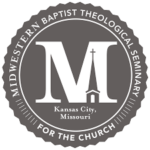As a follow-up to my recent article “10 Reasons the Old Testament Is Important for Christians,” I wanted to suggest three books that can help you stay appropriately “hitched” to the Old Testament.
1. God’s Kingdom through God’s Covenants: A Concise Biblical Theology
Peter J. Gentry and Stephen J. Wellum
Crossway, 2015
The plotline of Scripture is guided by a progression of covenants between God and humans that move us from creation through the fall to redemption and unto consummation. I believe that Gentry and Wellum’s God’s Kingdom through God’s Covenants is perhaps the best brief overview of how the whole Bible progresses, integrates, and climaxes in Christ. The work is an abridged version of their massive Kingdom through Covenant: A Biblical-Theological Understanding of the Covenants, 2nd ed. (Crossway, 2018), and it’s exegetically faithful, theologically profound, and grounded in the interpretive patterns of the biblical authors themselves.
Along with unpacking the nature, relationship, and development of the Adamic-Noahic, Abrahamic, Mosaic, Davidic, and new covenants, the book offers incisive reflection on Christology, the Christian life, ecclesiology, and eschatology, helpfully charting a course between dispensational and covenant theologies. If you want to get a better sense of “the whole counsel of God” (Acts 20:27), I encourage you to read this book.
2. Journeys with Jesus: Every Path in the Bible Leads Us to Christ
Dennis E. Johnson
P&R Publishing, 2018
When Jesus opened up the Scriptures for his disciples, showing how the Old Testament pointed to him, their hearts burned with awe and wonder (Luke 24:27, 32). I long for the church worldwide to see and savor the beauties of the divine Son from all Scripture, and Johnson’s Journeys with Jesus is a faithful guide to this end. Building off his earlier volume Him We Proclaim: Preaching Christ from All the Scriptures (P&R, 2007), this volume guides readers in how to faithfully magnify the Messiah in the initial three-fourths of the Christian Bible. Johnson shows how the Old Testament points to and finds its terminus in Jesus, and he teaches how to properly trace God’s intended theological trajectories that culminate in Christ.
3. A Biblical-Theological Introduction to the Old Testament: The Gospel Promised
Edited by Miles Van Pelt
Crossway, 2016
The Old Testament is less like bolts of fabric stacked against a wall and more like an intentionally crafted quilt with each square bearing its own texture and feel (i.e., author, story, and purpose) and with all the squares contributing to a greater overarching piece of art. The divine author worked through multiple human authors using different genres over a thousand-year period to proclaim a unified message of gospel hope and the glories of the coming Christ.
In A Biblical-Theological Introduction to the Old Testament, numerous faculty members from Reformed Theological Seminary, each with a specialization, articulate the message(s) of each individual Old Testament book in the context of the whole canon of Christian Scripture. Van Pelt notes in the preface: “We not only work to understand the meaning of each individual book in the larger context of the Old Testament, but we also recognize, affirm, and submit to the authoritative witness of the New Testament in establishing the full and final message of the Old Testament (e.g., John 5:39, 45–47; Luke 24:25–27, 44–45; Rom. 1:1–3; Heb. 12:1–3; 1 Pet. 1:11).” To me, this hermeneutical approach is beautiful, and it’s how books seeking to capture the Old Testament’s lasting message ought to be written.
Following Van Pelt’s exceptional introduction to the Old Testament as Christian Scripture, each chapter on the various biblical books follows the same six-part structure, bringing a sense of unity to the whole volume. The authors give the bulk of space in each chapter to “Message and Theology” and “Approaching the New Testament,” developing key themes or motifs and trying to capture how they contribute to an overarching kingdom message given through a covenantal structure that focuses on Christ. I’d encourage those readying to dig into an Old Testament book to first read the related chapter in this Introduction, as it will help you better understand how all the book’s parts contribute to the message of the whole and what themes you need to be aware of in order to rightly grasp the author’s point and to faithfully magnify the Messiah. Preachers and teachers should also keep this book handy, as it will aid your weekly exposition. Also, keep in mind that Michael J. Kruger has edited a companion volume titled A Biblical-Theological Introduction to the New Testament: The Gospel Realized (Crossway, 2015).
This article originally appeared at The Gospel Coalition.






